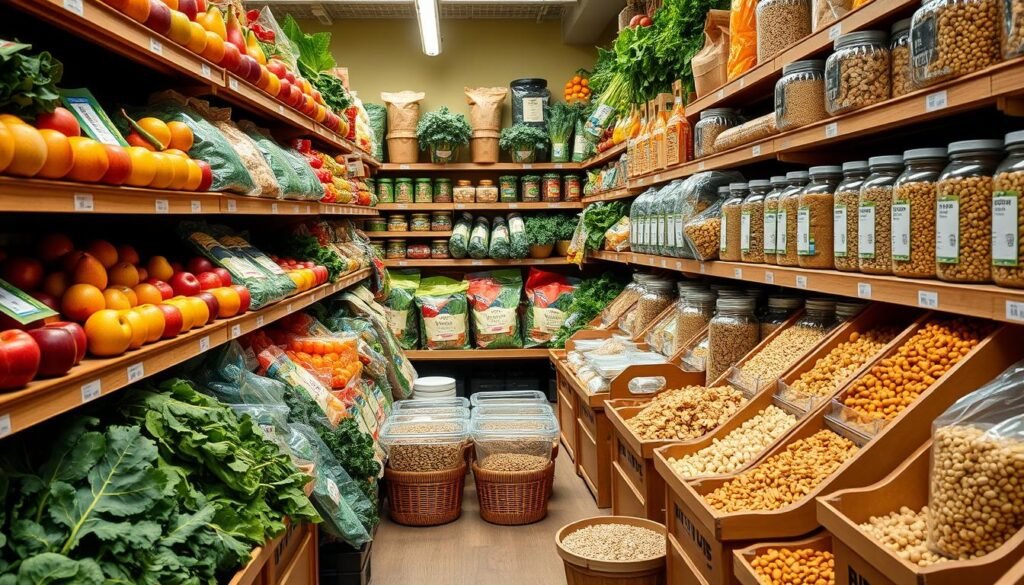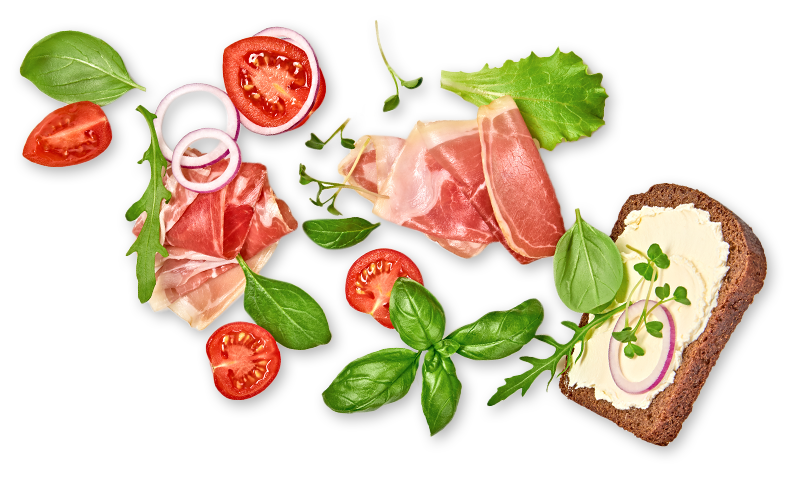High Fiber Foods for Pregnancy : Eating a diet full of high fiber foods is key for pregnant women. These foods help avoid constipation and keep blood sugar levels healthy. They also support the baby’s growth and development.
High fiber foods include fruits, veggies, whole grains, and legumes. These foods are packed with fiber. They help prevent pregnancy problems. A diet rich in these foods also boosts overall health.
Knowing the value of high fiber foods is vital for a healthy pregnancy. Pregnant women should make sure to eat these foods. It’s good for their health and their baby’s. Good Fiber Foods for Pregnancy
Key Takeaways ( Good Fiber Foods for Pregnancy )
- Eating high fiber foods for pregnancy can help prevent constipation and promote healthy blood sugar levels.
- High fiber foods for pregnancy include fruits, vegetables, whole grains, and legumes.
- A diet rich in high fiber foods for pregnancy can support the growth and development of the baby.
- High fiber foods for pregnancy can help prevent common pregnancy-related issues.
- Incorporating high fiber foods for pregnancy into your diet can promote overall health and well-being.
- Expectant mothers should focus on eating a variety of high fiber foods for pregnancy to support their health and the health of their baby. Good Fiber Foods for Pregnancy
Understanding Fiber Needs During Pregnancy
High Fiber Foods for Pregnancy : During pregnancy, fiber is key in your diet. Your body and your baby need more fiber. Eating foods high in fiber can help with constipation and hemorrhoids.
A diet full of fiber offers many benefits. Fiber keeps your bowels regular, preventing constipation and hemorrhoids. It also helps control blood sugar and supports a healthy weight. Good Fiber Foods for Pregnancy
Daily Recommended Fiber Intake
Pregnant women should aim for 25-30 grams of fiber daily. You can get this from fruits, veggies, whole grains, and legumes.
Why Fiber Becomes Crucial During Pregnancy
Fiber is vital during pregnancy. It helps with constipation and keeps your digestive system healthy.
Types of Dietary Fiber
Dietary fiber comes in two forms: soluble and insoluble. Soluble fiber lowers cholesterol. Insoluble fiber helps with regular bowel movements.
- Fruits: berries, apples, bananas
- Vegetables: broccoli, carrots, sweet potatoes
- Whole grains: brown rice, quinoa, whole wheat bread
- Legumes: lentils, chickpeas, black beans
Adding these high fiber foods to your diet helps meet your fiber needs. It supports a healthy pregnancy.
| Fiber-Rich Food | Fiber Content (per serving) |
|---|---|
| Apple | 4.5 grams |
| Broccoli | 5.1 grams |
| Quinoa | 5.2 grams |
Benefits of High Fiber Foods for Pregnancy
High fiber foods are great for pregnant women. They help prevent constipation and keep blood sugar levels healthy. A diet full of fiber is good for the baby’s growth and lowers the risk of problems like gestational diabetes and preeclampsia.
High fiber foods have many benefits. Some of the main advantages are:
- Healthy digestion and bowel function
- Support for healthy blood sugar levels
- Promotion of satiety and weight management
Expectant mothers should eat high fiber foods to stay healthy. Fiber-rich foods are key for a balanced diet. They give the mother and the baby the nutrients they need.
Knowing the benefits of high fiber foods helps expectant mothers make better food choices. A diet rich in fiber can lower the risk of pregnancy problems. This ensures a healthy pregnancy and a healthy baby.
Best Fruits High in Fiber for Pregnant Women
High Fiber Foods for Pregnancy : Fruits are key for pregnant women, offering important nutrients and fiber. High fiber fruits like apples and bananas are great choices. They help keep the digestive system healthy and prevent constipation.
Some top high fiber fruits for pregnant women are:
- Apples, with their high fiber content and antioxidants
- Bananas, rich in potassium and fiber
- Berries, such as strawberries and blueberries, which are high in fiber and antioxidants
Dried fruits are also packed with fiber. Apricots, prunes, and raisins are great for pregnant women. You can add them to oatmeal or yogurt, or blend them into smoothies.
Eating high fiber fruits helps pregnant women stay healthy. It keeps the digestive system working well and prevents constipation. Fruits are a tasty way to get the fiber needed during pregnancy.
| Fruit | Fiber Content (per serving) |
|---|---|
| Apple | 4.5 grams |
| Banana | 3.5 grams |
| Strawberries | 3.8 grams |
Fiber-Rich Vegetables for Expectant Mothers
Expectant mothers can greatly benefit from high fiber vegetables. These veggies are packed with nutrients that support a healthy pregnancy. They are rich in fiber, vitamins, and minerals, making them key to a balanced diet.
Some top high fiber vegetables for pregnant women are:
- Leafy greens like spinach and kale
- Broccoli, which is rich in fiber and vitamins
- Carrots, which are high in fiber and beta-carotene
It’s easy and tasty to add these vegetables for pregnancy to your meals. Try them in salads, soups, or stir-fries. You can also roast them as a side dish.
Eating a variety of high fiber vegetables helps pregnant women meet their fiber needs. It supports a healthy pregnancy.
| Vegetable | Fiber Content |
|---|---|
| Spinach | 4.3 grams per cup |
| Broccoli | 5.1 grams per cup |
| Carrots | 3.7 grams per cup |
Whole Grains and Pregnancy Nutrition
Whole grains are key for a healthy diet, especially for pregnant women. They offer fiber, vitamins, and minerals. High fiber whole grains are especially good, helping with digestion and supporting the baby’s growth.
Expectant mothers should add whole grains for pregnancy to their meals. Good choices include brown rice, quinoa, and whole wheat bread. These foods are packed with fiber, vitamins, and minerals, making them great for a pregnant woman’s diet.
Best Whole Grain Options
- Brown rice
- Quinoa
- Whole wheat bread
- Oats
- Barley
Incorporating Whole Grains into Meals
Adding whole grains to meals is simple and tasty. Swap white rice for brown rice or use whole wheat bread for sandwiches. High fiber whole grains also work well in salads, soups, and stir-fries.
Gluten-Free High Fiber Alternatives
Women with gluten intolerance or sensitivity have many gluten-free options. Gluten-free oats, brown rice, and quinoa are all high in fiber and nutrients. They’re perfect for expectant mothers.
| Food | Fiber Content |
|---|---|
| Brown rice | 3.5 grams per cup |
| Quinoa | 5 grams per cup |
| Whole wheat bread | 3 grams per slice |
Legumes and Pulses During Pregnancy
Legumes and pulses are key for a healthy diet during pregnancy. Legumes, like lentils, chickpeas, and black beans, are packed with fiber, protein, and nutrients. They help the baby grow, keep digestion healthy, and control blood sugar.
Legumes and pulses offer many benefits during pregnancy. Here are some of them:
- High fiber content to support digestive health
- Rich in protein to support fetal growth and development
- Good source of essential nutrients, such as iron and folate
- May help to manage blood sugar levels and reduce the risk of gestational diabetes

- Lentils
- Chickpeas
- Black beans
- Kidney beans
Adding legumes and pulses to your diet is easy and tasty. They’re great in soups, stews, salads, and stir-fries. They also make a good meat substitute. Legumes and pulses are a fantastic choice for a healthy pregnancy diet.
| Legume/Pulse | Fiber Content | Protein Content |
|---|---|---|
| Lentils | 15.6g per 1 cup cooked | 18g per 1 cup cooked |
| Chickpeas | 12.5g per 1 cup cooked | 15g per 1 cup cooked |
| Black beans | 9.5g per 1 cup cooked | 15g per 1 cup cooked |
Smart Snacking with High-Fiber Options
During pregnancy, eating well is key, and snacks are important. High fiber snacks keep you full and support your baby’s health. It’s important to pick snacks that are full of nutrients but low in empty calories.
Quick and Easy Fiber-Rich Snacks
Quick and easy high fiber snacks include fresh fruits, carrot sticks with hummus, and whole grain crackers with avocado. These snacks are tasty and full of fiber. Fiber is good for your digestive health during pregnancy.
Portion Control Guidelines
It’s important to control your snack portions. Aim for snacks that are 100-200 calories. This helps you stay healthy and supports your baby’s health too.
- A small apple (95 calories, 4g fiber)
- 1/2 cup carrot sticks with hummus (100 calories, 6g fiber)
- 1 ounce of whole grain crackers (80 calories, 3g fiber)
By adding these high fiber snacks to your diet and watching your portions, you support a healthy pregnancy and baby.
Creating a Balanced High-Fiber Meal Plan
A good high fiber meal plan is key for pregnant women. It helps them get the nutrients they need for a healthy pregnancy. A meal plan for pregnancy should include foods like fruits, vegetables, whole grains, and legumes. These foods support your health and your baby’s.
To make a balanced high fiber meal plan, follow these tips:
- Start your day with a fiber-rich breakfast, like oatmeal with fruit or whole-grain toast with avocado
- Add colorful vegetables to your meals, such as leafy greens, bell peppers, and carrots
- Choose whole grains, like brown rice, quinoa, and whole-wheat bread, over refined grains
- Include legumes, such as beans, lentils, and chickpeas, in your meals and snacks
By following these tips and making a personalized meal plan for pregnancy, you’ll get the nutrients you need. Don’t forget to drink plenty of water and avoid sugary drinks.
A balanced high fiber meal plan keeps you full and supports your baby’s health. Simple diet changes can make your pregnancy healthier and happier.
Potential Side Effects and How to Avoid Them
Adding high fiber to your diet during pregnancy is important. But, it can cause digestive problems like bloating, gas, and constipation. These issues can happen if you suddenly eat more fiber.
Common Digestive Issues
To avoid these problems, start with small amounts of high-fiber foods. Slowly increase how much you eat over time. This lets your body get used to the change.
Gradual Integration Tips
Here are some tips for adding fiber slowly:
- Start with small servings of high-fiber foods
- Drink plenty of water to help fiber move through your digestive system
- Avoid introducing too many new foods at once
When to Consult Your Healthcare Provider
If you have severe side effects or discomfort, see your healthcare provider. They can offer advice tailored to you. They can help with any issues related to high fiber and pregnancy.
| Side Effect | Description | Prevention |
|---|---|---|
| Bloating | Feeling of discomfort or tightness in the abdomen | Drink plenty of water, avoid carbonated drinks |
| Constipation | Difficulty passing stools or infrequent bowel movements | Increase water intake, exercise regularly |
Hydration and Fiber: The Perfect Partnership
During pregnancy, it’s key to eat a balanced diet with enough hydration and fiber. These two are vital for a healthy pregnancy. A diet rich in fiber can ease symptoms like constipation and hemorrhoids.
Drinking at least eight glasses of water a day helps with hydration and fiber absorption. Eating foods high in fiber, like fruits, veggies, and whole grains, supports a healthy gut. Here are some tips to keep you hydrated and fiber-rich:
- Drink water regularly throughout the day
- Incorporate high-fiber foods into your meals and snacks
- Limit your intake of low-fiber foods, such as processed and sugary snacks
By focusing on hydration and fiber, you support a healthy pregnancy and lower the risk of problems. Always talk to your healthcare provider for specific nutrition advice.
Here is a sample table to help you track your daily hydration and fiber intake:
| Food | Fiber Content | Hydration Level |
|---|---|---|
| Apple | 4 grams | 84% |
| Carrot | 3 grams | 87% |
| Brown Rice | 3.5 grams | 73% |
Supplements vs. Natural Sources of Fiber
Many people think about taking fiber supplements to meet their daily needs. But it’s important to compare them to natural sources. Foods like fruits, vegetables, and whole grains offer fiber and other nutrients that supplements often lack.
Eating a variety of natural fiber sources is key. Legumes, nuts, and seeds are great examples. They’re not just high in fiber but also in protein, healthy fats, and vitamins.
For some, fiber supplements are a good option. This might be true for those with health issues or trouble getting enough fiber from food. Always choose a supplement that’s natural and doesn’t have added sugars or artificial stuff.
Here are some tips for getting enough fiber from natural sources:
- Incorporate a variety of fruits and vegetables into your diet
- Choose whole grains over refined grains
- Include legumes, nuts, and seeds in your meals and snacks
By focusing on natural fiber sources and using supplements when needed, you can meet your daily fiber goals. This supports your health and well-being.
| Fiber Source | Fiber Content |
|---|---|
| 1 cup cooked legumes | 15-16 grams |
| 1 cup cooked whole grains | 3-4 grams |
| 1 medium apple | 4-5 grams |
Shopping Guide for High Fiber Foods
When you’re high fiber foods shopping, knowing what to look for is key. As a pregnant woman, shopping for pregnancy can feel overwhelming. But, with the right tips, you can make smart choices. Look for whole foods like fruits, veggies, whole grains, and legumes. They’re full of fiber naturally.
A smart high fiber foods shopping trip can really boost your pregnancy diet. Here are some tips to help you:
- Read food labels to make sure you’re getting enough fiber
- Choose whole grains over refined or processed ones
- Add a variety of fruits and veggies to your meals
Remember, shopping for pregnancy is about more than just buying food. It’s about making healthy choices for you and your baby. By focusing on high fiber foods shopping, you’re on your way to a balanced diet.

With a bit of practice and patience, you’ll get the hang of high fiber foods shopping and shopping for pregnancy. Happy shopping!
Meal Prep Tips for Fiber-Rich Foods
Meal prep is a big help when you’re pregnant and want to eat healthy. It lets you make meals full of fiber ahead of time. This way, you can make sure you’re getting all the nutrients you need.
Meal prep saves you time and reduces stress. It lets you plan and make healthy meals, like those full of fiber, early. This way, you can always have what you need for a healthy pregnancy.
Storage Guidelines
Keeping your meals fresh and safe is key. Store them in airtight containers and label them. Make sure they’re kept cold, at 40°F (4°C) or below.
Time-Saving Preparation Methods
There are ways to make meal prep quicker. Cook proteins like chicken or beans in big batches. Roast veggies ahead of time. And, make individual portions of things like salads or soups.
By using these tips and eating more fiber, you can help your pregnancy stay healthy. Always talk to your doctor before changing your diet or meal prep routine.
| Fiber-Rich Food | Serving Size | Fiber Content |
|---|---|---|
| Avocado | 1 medium | 10 grams |
| Broccoli | 1 cup cooked | 5 grams |
| Whole Wheat Bread | 1 slice | 3 grams |
Common Myths About Fiber During Pregnancy
There are many myths about pregnancy and fiber that can confuse expectant mothers. It’s important to know the truth to have a healthy diet. A high-fiber diet can actually help with constipation and other digestive issues during pregnancy.
Some think that foods high in fiber, like legumes and whole grains, cause gas and bloating. But these foods are full of nutrients and can be good for a healthy pregnancy diet. Just start with small amounts to let your body get used to them.
To understand fiber myths and make good diet choices during pregnancy, talk to experts. Your healthcare provider can give you advice on adding high-fiber foods to your diet. This can help you have a healthier pregnancy and lower the risk of problems.
- Increase your fiber intake gradually to allow your body to adjust
- Choose a variety of high-fiber foods, including fruits, vegetables, whole grains, and legumes
- Stay hydrated by drinking plenty of water to help fiber move through your digestive system
By clearing up fiber myths and eating a balanced diet, you can support a healthy pregnancy. Always look for reliable sources of information. And don’t hesitate to ask your healthcare provider about your diet or fiber intake during pregnancy.
Conclusion: Embracing a Fiber-Rich Pregnancy Diet
Starting your pregnancy journey? A diet full of high-fiber foods can change your game. Eating fruits, veggies, whole grains, and legumes nourishes you and your baby. It’s not just for constipation relief; it brings many benefits for a better pregnancy.
Look into all the fiber-rich foods out there. Try new recipes and mixes. With some planning, you can add these foods to your meals and snacks. Making fiber a key part of your diet is good for you and your baby.
Your healthcare provider can help you meet your fiber needs. Use this chance to feed yourself and your baby well. Enjoy the benefits of a fiber-rich diet during your pregnancy.




